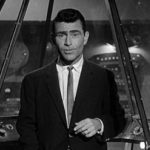 Weird Stuff
Weird Stuff  Weird Stuff
Weird Stuff  History
History 10 Times Trickery Won Battles
 Technology
Technology 10 Awesome Upgrades to Common Household Items
 Misconceptions
Misconceptions 10 Hilarious (and Totally Wrong) Misconceptions About Childbirth
 Weird Stuff
Weird Stuff 10 Warning Labels That Exist Because Someone Actually Tried It
 Health
Health Ten Confounding New Inventions from the World of Biomedicine
 Creepy
Creepy 10 Death Superstitions That Will Give You the Creeps
 Movies and TV
Movies and TV 10 Movies That Get Elite Jobs Right, According to Experts
 Weird Stuff
Weird Stuff 10 Times Real Laws Were Based on Bizarre Hypotheticals
 Animals
Animals 10 Inspiring Tales of Horses Being Human
 Weird Stuff
Weird Stuff 10 Typos That Accidentally Changed History
 History
History 10 Times Trickery Won Battles
 Technology
Technology 10 Awesome Upgrades to Common Household Items
Who's Behind Listverse?

Jamie Frater
Head Editor
Jamie founded Listverse due to an insatiable desire to share fascinating, obscure, and bizarre facts. He has been a guest speaker on numerous national radio and television stations and is a five time published author.
More About Us Misconceptions
Misconceptions 10 Hilarious (and Totally Wrong) Misconceptions About Childbirth
 Weird Stuff
Weird Stuff 10 Warning Labels That Exist Because Someone Actually Tried It
 Health
Health Ten Confounding New Inventions from the World of Biomedicine
 Creepy
Creepy 10 Death Superstitions That Will Give You the Creeps
 Movies and TV
Movies and TV 10 Movies That Get Elite Jobs Right, According to Experts
 Weird Stuff
Weird Stuff 10 Times Real Laws Were Based on Bizarre Hypotheticals
 Animals
Animals 10 Inspiring Tales of Horses Being Human
10 Facts You Might Not Know about the Nazi’s Atomic Bomb Program
Of the many “what-ifs” that can be asked about the Second World War, one stands out among the others. What if the Nazis had nuclear bombs? It certainly would have changed the outcome, and the world should thank its lucky stars that they never did. But they had the resources and the brain power, so what exactly stopped them?
There is no short answer to that question, which makes the story of the German nuclear weapons program a very interesting one. This list will cover the many mistakes, famous figures, and fearless soldiers involved in the Nazi nuclear program, one of history’s most fortunate failures.
Related: Top 10 Fascinating Stories Involving Nuclear Explosions
10 It Had a Headstart
In the first half of the 20th century, Germany was a world leader in science. They had made important advances in physics which included the discovery of nuclear fission in 1938. The discovery was an accident, but scientists quickly understood its possible uses. By April 1939, the Germans had formed the Uranverein, or “Uranium Club,” their secret nuclear weapons program.
With some of the world’s top scientists on board, plenty of materials, and the support of military leaders, it seems like the German project started out with every possible advantage. The Manhattan Project did not even exist as an idea. Yet, by the time the latter was in full swing, German efforts to make nuclear weapons had been halted. They never even came close.
Instead, they shifted resources back to normal weapons, and the nuclear project focused on inventing a nuclear reactor. How exactly the Germans squandered their head start does not come down to any single cause but to many factors, which will be explored in this list.[1]
9 Famous Scientists Worked on It
Like the Manhattan Project, the Uranium Club employed some of the brightest minds of its day. Chief among these was Werner Heisenberg, the Nobel prize-winning physicist famous for his uncertainty principle. He served as the scientific head of the project even though his own career had been held up by Nazi ideology. He had offers to work in the U.S. but was apparently very loyal to his country and never thought seriously about leaving.
Working with him was Carl Friedrich von Weizsäcker, another theoretical physicist. After the war, Weizsäcker won one of Germany’s highest scientific awards. He went on to write about the ethics of atomic energy and opposed the nuclear armament of West Germany.
Otto Hahn, the Nobel laureate whose discovery of nuclear fission got the project started, actually never worked on it. However, the Allies thought that he had and interned him along with other German scientists at the end of the war. Hahn did not want his discovery to be used for weapons, and when he heard about the bombs in Japan, he was said to be on the brink of despair.[2]
8 Einstein Personally Warned FDR about It
Albert Einstein did not work on the Manhattan Project, but its origin can be traced back to a letter he sent to President Franklin Roosevelt in 1939, warning him that the Germans were probably working on a nuclear bomb. That his own warning would lead to the creation and use of nuclear bombs by the Americans was something he did not predict and deeply regretted.
Einstein was asked to write the letter by a fellow physicist, Leo Szilard. Szilard was one of a number of concerned scientists who were having a hard time convincing officials that this strange scientific discovery could pose a seriously big threat. Einstein clearly laid out for the president what the consequences of a nuclear bomb blast might be, explaining that if the bomb is set off in a port, it could destroy everything there and some of the surrounding area.
However, Einstein did get things a little wrong; he pictured the bombs being carried by boats because he thought they might be too heavy for air travel. But the letter worked, and Roosevelt began to support research into nuclear weapons.[3]
7 A Famous and Mysterious Meeting of the Minds
In 1941, Heisenberg traveled to Denmark for a meeting with another one of the 20th century’s leading physicists, Niels Bohr. Heisenberg wanted to discuss the Uranium Club he was leading for the Nazis. The Nazis did not trust Bohr and were spying on him, so the two scientists met in a park to make it harder for people to snoop on their conversation. This also meant that no direct record was ever made of what they talked about.
The mysterious meeting thus became an ongoing point of debate between historians. It even became the basis of a popular play. What was Heisenberg’s motive? What did he say? Something that is known is that Bohr hurriedly left the conversation. He said Heisenberg had been boasting about an imminent German victory and how he would build the first atomic bomb.
Heisenberg claimed he had tried to convince Bohr to help end nuclear weapon development on both sides by having scientists argue that the bombs would take too long and be too expensive to develop. To protect himself, Heisenberg could not say so directly because it was treasonous, which led to Bohr misunderstanding him.[4]
6 Beyond Hitler’s Comprehension
While many scientists quickly understood it, it was difficult for non-scientists to see how revolutionary nuclear physics would be. This applied to officials on both sides of the war, but Hitler did not have Einstein to clarify things for him like FDR. This would cost him dearly in the war and the history books.
Although his reputation really got worse, some research now blames Hitler’s lack of intellect for the German failure to build an atomic bomb. Albert Speer, Hitler’s minister for armaments, said that Hitler was aware that atomic bombs were possible, but he did not really understand the physics, nor could he see what a game changer it would be. He was also intellectually insecure. His suspicion of people who were smarter than him meant he did not support projects he could not understand well.
Although the Uranium Club got the go-ahead, it never really had the support it needed to succeed from the Nazi leadership. They funded lab-based research but refused to upgrade the project to the industrial scale, which would have been necessary to build the bomb.[5]
5 The Allies Overestimated It
At the end of the war, ten German physicists, including Werner Heisenberg and Otto Hahn, were being held by the Allies at Farm Hall in England. While there, they were secretly being recorded. Upon hearing about the Hiroshima bomb, Heisenberg was beyond skeptical; “”I don’t believe a word of the whole thing.” Hahn did not think any such weapon would be possible for two more decades.
The scientists agreed it must have been a bluff to make the Japanese surrender. The Allied forces listening in must have been surprised by the conversation; they did not know that the German nuclear project had come to nothing. But now they knew that the Germans had squat, and it made the billions of dollars and hundreds of thousands of scientists committed to the Manhattan Project seem like a massive overreaction in retrospect.[6]
4 The Americans Abducted Heisenberg
The story of how Heisenberg ended up in Farm Hall began with a special operation code named “Alsos” in 1943. Its leader, Colonel Pash, was a U.S. counterintelligence officer who had caught a communist spy ring trying to steal secrets from the Manhattan Project. As part of Operation Alsos, he led a team into Europe to interrogate scientists and capture research. But his priority was capturing Heisenberg, and that meant taking his small outfit into Germany.
The war was winding down, but there were still dangerous pockets of resistance. The team found two nuclear research labs in a cave and a textile mill. Scientists in the latter had hidden their secrets in a drum and sunk it in a cesspool. But Pash needed those documents, so his team had the unpleasant task of fishing them out. They also found Heisenberg’s office there, but not the man himself.
As it turns out, Heisenberg had headed into the Bavarian mountains a week earlier. Pash and company tracked him to a mountain cabin near the town of Urfeld and, after being interrupted by the mass surrender of Nazi troops, brought the scientist to England.[7]
3 A Daring Norwegian Raid to Destroy A Valued Resource
Operation Alsos was not the only daring mission that tried to stop the Nazi’s nuclear project. In fact, there were five separate attempts to attack just one target. That target was the Norsk hydroelectric power plant at Vermork in Norway. The Nazis had been interested in the site since the beginning of the war because of a byproduct it produced, heavy water, which can be used to control nuclear fission reactions.
But on February 16, 1943, the site was sabotaged by exiled Norwegian soldiers who had returned to carry out the sort of raid more commonly seen in action films. Six commandos parachuted onto a frozen lake before skiing nearer to the heavily guarded site.
With no direct way in, they had to descend a large cliff and cross a frozen river before climbing back up the other side. They cut their way through a fence and snuck in the back entrance, successfully planting their explosives in the heavy water production room before detonating them and escaping into the night before the Germans even had a clue.[8]
2 Scientists Probably Did Not Sabotage It
While historians debated Heisenberg’s words and motives in his meeting with Bohr, Heisenberg’s son believed people should look at the outcome; Heisenberg did convince Albert Speer that the atomic bomb was not going to be possible for years, and the project was downgraded. But many still question whether Heisenberg believed what he told Speer. Was he trying to sabotage the project, or had he just miscalculated?
Questions such as this would follow the project for years after the war. Serious miscalculations were made, and some have said that these might have been deliberate. Weizsaecker also claimed that the scientists did not seriously try to build the bomb because they were morally opposed to it, but the scientists had reputations to rebuild.
Historians generally agree that while the scientists had their misgivings, allegations of sabotage are weak. The German leaders had fair reasons not to prioritize the nuclear weapons project, so they did not. The best that can be said for Heisenberg and the other scientists is that they perhaps did not put as much effort into the project as they could have.[9]
1 Ultimately, It Was Too Little, Too Late
The Germans squandered their headstart in the nuclear arms race with a series of subsequent failures. Among those not mentioned so far was the persecution of Jewish and Polish scientists, which had the unintended consequence of many of the country’s smartest people leaving to go and help the Allies. This included Einstein, and Bohr eventually left occupied Denmark after he met with Heisenberg to go and work on the Manhattan Project.
The German leaders had also been led by their victories up until late 1941 to believe that they could win the war with ordinary weapons. However, the war changed after the Soviet counterattack and the entrance of the U.S. The Germans now wanted powerful weapons fast, but the resources and time needed for an atomic bomb were too great. The Nazis had also already invested heavily in their V2 rockets.
The Uranium Club only received a paltry 8 million reichsmarks or about $24 million in today’s money. That does not go far in wartime when resources are scarce.[10]








